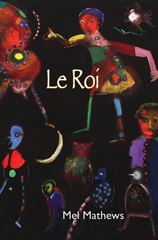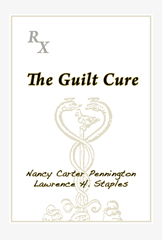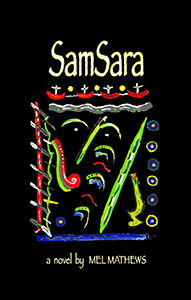The Seed of a Creative Life
by Lawrence Staples,
author of The Creative Soul: Art and the Quest and Guilt with a Twist: The Promethean Way
Active imagination is a technique developed by C.G. Jung to help amplify, interpret, and integrate the contents of our dreams. When approached by way of writing, active imagination is like writing a play. One takes, for example, a figure that has appeared in one’s dreams. Usually, these figures express a viewpoint quite the opposite of one’s normal conscious view. Sometimes it is a male or female, shadow figure. At other times, it may be a feminine, anima, or maternal figure.
One starts to converse with the figure in writing. One challenges the dream figure and lets him/her challenge the dreamer. The dreamer asks the figure why he appeared in the dream. He asks the figure what it wants from him. Then, the ego, like a playwright, puts himself as best he can into the figure’s shoes and tries to express it and defend its viewpoint. There ensues a dialogue between the writer and the opposite figure in his dream or piece of writing. With practice one can become accomplished at expressing both viewpoints, just as a playwright does. One gets better at this the more one does it.
The technique of active imagination tends to detach the qualities and traits that are first seen in a dream or in a story as belonging to external persons, and coming to see them as belonging to one’s self. Active imagination, then, helps the writer become conscious of his opposite qualities by forcing him to give voice to figures, like shadow figures, that carry qualities opposite those of his ego. These qualities personify the rejected opposites that are present in the unconscious. This technique helps recover them and make them available to the ego and consciousness without necessarily having to act them out.
Following is an impressive and rich example of the power of this technique to affect and even shape our lives. It’s an active imagination done by Mel Mathews when he was in his late thirties. He was an extremely successful salesman who was, nevertheless, unhappy with his work and life. Despite his high income, work had lost its meaning for him. He had entered Jungian analysis in order to help him out of his suffocating existence and find a new and different way. He had a powerful dream that he took to his analyst.
His analyst suggested he do active imagination with one of the figures in the dream. His is a beautiful example of active imagination that led to much more than a dialogue. It became the seed of a creative life that grew and flourished into a wholly new career. Out of his active imagination came a novel,
LeRoi - Book 1 of The Chronicles of a Wandering Soul series, which was then followed by several other novels, including
Menopause Man-Unplugged and
SamSara.
The power of the active imagination is seen in the fact that it unearthed in Mel some deep hidden spring of creativity that suddenly gushed forth. Apparently, he had been living a life of suspended animation that lay there until some psychic prince awoke it. He had the following dream:
A woman was sitting in a diner, in a booth smoking. “Excuse me, I wonder if you could put your cigarette out?” I asked. She ignored me. A few minutes later she lit up again. I stood up, walked around to her booth, grabbed her pack of smokes and the ashtray and walked out the front door. I dumped the ashtray and stepped on her lit smoke; then, I dropped her pack and stomped them as well. I walked back inside, slammed the empty ashtray down on the coffee counter and sat down. A petite pony-tailed brunette walked up with the iced tea pitcher to refill my glass. “Can I have some more ice please?” “Sure,” she answered, “I’m sure (Flo) the boss-lady will be out in a minute,” the brunette said, as she turned around with my ice. “What does she want?” “You’ll have to ask her yourself.”
Mel discussed the dream with his analyst who suggested a dialogue with the boss-lady.
Following is his active imagination with Flo, the name of the boss-lady. This brief dialogue is to his novel what an acorn is to an oak tree. This brief dialogue apparently contained all the genetic codes necessary to make a novel just as an acorn has the genetic codes that lead to an oak tree.
Flo: Howdy.
Mel: Hi.
Flo: Purdy hot day, huh?
Mel: I can stand the heat. It’s the stray cigarette smoke that sets me off.
Flo: So that gives you the right to run off one of my regulars.
Mel: I asked her to put it out.
Flo: Did you ask her or did you beat around the bush with some rude indirect comment?
Mel: Lady, I don’t know who you are or what’s on your mind, but I really don’t need any more crap today.
Flo: Well kid right now you’re in my diner and you’re runnin’ off my patrons.
Mel: Oh great.
Flo: I’ve dealt with your kind for years so let’s just cut to the quick.
Mel: Look, lady, I’m sorry if I offended anybody here, but I’ve got some problems. My MG is broken down across the street.
Flo: So what?
Mel: Things just aren’t falling into place today.
Flo: Would you like some chocolate milk little boy, or how about your ass wiped? In this café, the world doesn’t revolve around you.
While the creative process is different for each individual, one can sometimes discern similarities. The seed that unleashed Mel’s creative process was a dream and a few sentences associated with the dream. His process bears some resemblance to the process by which Isak Dineson created her work.
Mel Mathews' development as a person and a writer is a wonderful testimony to the power of creativity to shape our lives and connect us to our souls. His dream and the dialogue that flowed from it to create LeRoi is an incredibly rich and impressive example of active imagination, as I understand it. His experience of active imagination is one of the most powerful examples I have ever witnessed. His dialogue with Flo seemed to unearth for him a huge reservoir of suspended animation that poured forth into the world and continues to flow. Actually, "Flo" and "flow" do seem somehow related. Mel's experience is enough to encourage therapists not only to use active imagination with their clients but also with themselves."





